This post may contain affiliate links, please view our disclosure policy for more details.
We know that as a parent, ensuring your baby receives the nutrients they need to grow healthy and strong is at the top of your list! Carbs, proteins, minerals, and vitamins need to be available in the right quantity for your little one’s optimum health and well-being. Among these essential nutrients, iron plays a crucial role in supporting your baby’s growth and physical development.
Getting enough iron is one of the most talked about topics when starting solids. That’s because your baby’s iron requirements are SO high, and it’s not as easy to meet those requirements as it is to meet – say – protein or fat needs. Talk about pressure!
Now, it’s one thing to want to give your baby enough iron, and it’s a totally different thing knowing exactly how to do it. Plus, why is iron even important in the first place?
Don’t worry – in this article we’ll explore the importance of iron for babies, how to give your baby the iron they need and highlight some nutritious foods (with recipes!) that can help meet their iron needs.
If you’re just getting started with solids and the thought of coming up with daily meal ideas that meet your baby’s unique nutrient needs sounds daunting – you need our 60 day meal plan! With a strategic introduction of the top allergens, weekly grocery lists, and recipes that take you through our signature Texture Timeline™, the seemingly impossible task of figuring out what to feed your baby is taken care of.
No more decision fatigue about what to serve, no more looking up if what you’re offering is giving them the nutrients they need. Just follow the plan, step-by-step, and gradually introduce foods at a pace that works for you, with our expert guidance along the way.
Table of Contents
Why is iron so important for babies?
Iron is an essential component of a baby’s diet because it plays several vital roles in their growth and development. Let’s go through each of those functions in some detail so we can get the full picture of why everyone is always talking about iron for babies!
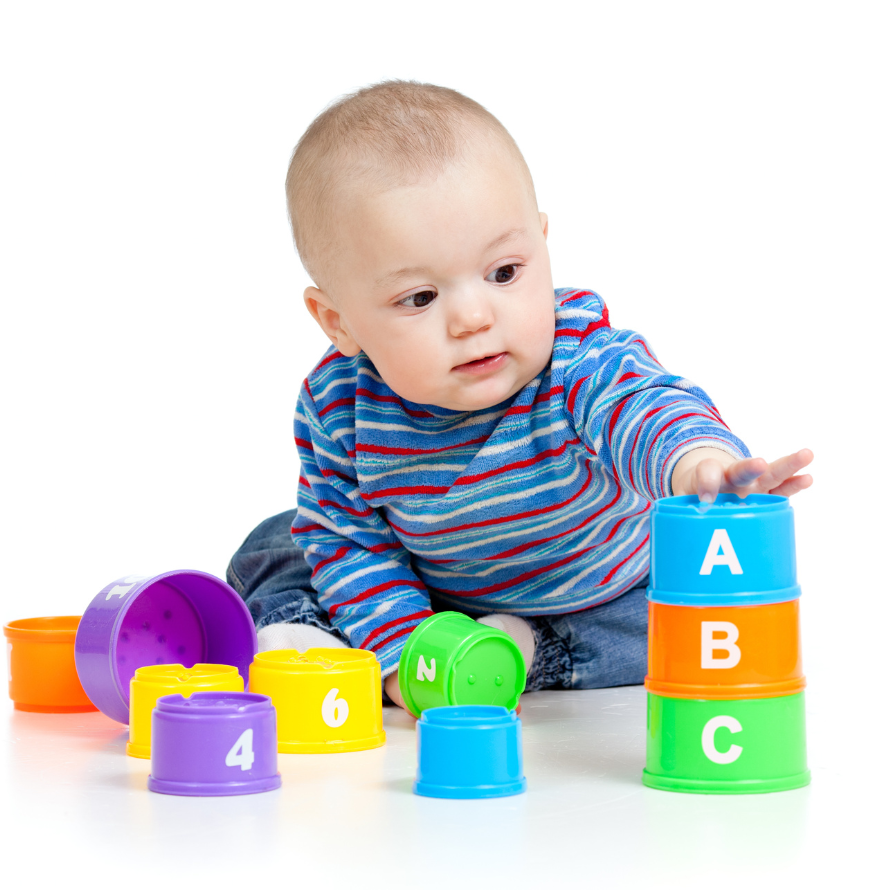
Brain development
Research has shown that iron plays a fundamental role in brain development during infancy and early childhood (1). It’s involved in the production of chemical messengers in the brain, which are essential for learning, and memory.
Production of healthy red blood cells
Iron is a critical component of hemoglobin, the protein in red blood cells responsible for transporting oxygen throughout the body (2). Adequate iron levels ensure that your baby’s cells receive the oxygen they need for energy production and overall vitality.
Immune function
Iron is essential for a robust immune system. It supports the production of white blood cells, which are the body’s first line of defense against infections and illnesses (3).

Prevention of anemia
Iron deficiency anemia is a common concern in infants and young children. This is where the body doesn’t have enough iron to allow red blood cells to carry enough oxygen (through hemoglobin) (4). Anemia can lead to fatigue, weakness, and developmental delays. Ensuring your baby receives enough iron-rich foods helps prevent this condition and promotes overall health.
Physical growth
Iron is necessary for proper physical growth and development. It supports the formation of muscles, bones, and tissues, ensuring that your baby reaches their developmental milestones. Research shows that longer-term iron deficiency may lead to delayed growth and can affect neurodevelopment and behavior (5).
How much iron does a baby need?
Babies from 7 months to 1 year of age require 11.4 mg/day of elemental iron.
Sounds like a lot right?
Well, it really is because that’s actually more than the amount of iron that an adult male would need!

The calculation for how much iron a baby needs is based on the fact that the first year of life is a period where babies experience rapid growth. This means that iron requirements per kilogram of body weight are higher than during any other period of life.
It’s also based on the assumption that the iron consumed is absorbed in the body at a rate of approximately 10% (6). We’ll go over why this is the assumed absorption rate later on!
Before 6 months of age, your baby has built-up iron storage in their body from you – their mama – while they’re growing in the womb! The amount of iron stored depends on a few factors, such as whether or not they were carried to term, their birth weight, if there was delayed cord clamping, the nutritional status of the mother, etc. (7).
For the majority of term babies born at a normal birth weight and who are getting adequate nutrition through breastmilk and/or formula, the iron stores they’ve built up will last them until around 6 months of age (8). Of course, it can vary from baby to baby but it doesn’t happen overnight and is more of a gradual process.

After 6 months, your baby encounters rapid growth and their iron stores get depleted quickly. At this point, the iron in your breast milk or formula is not sufficient to replenish your baby’s iron stores. It then becomes important that you give your baby iron through their solid foods.
How often should you serve high-iron foods?
Iron rich foods should be introduced to your baby when they begin transitioning to solid foods, typically around six months of age. Starting early ensures that your baby receives the necessary nutrients for growth and development.
To ensure that your baby has all the iron they need to grow properly, you should aim to serve iron-containing meals twice every day. This is bearing in mind that your baby may not finish everything on their plate. Giving high-iron foods more often in a day increases your baby’s chances of getting enough iron.
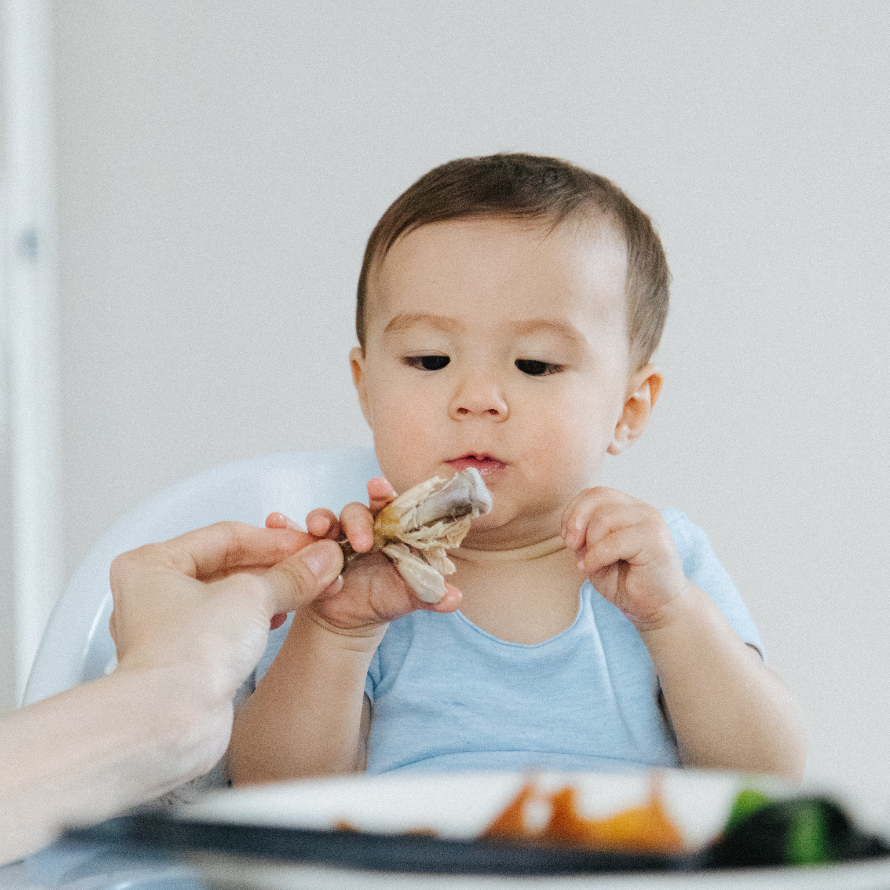
The goal is to ensure that your baby is getting practice eating iron rich foods early on, because some can be trickier to eat, like various types of meat. Having consistent exposure to these foods, with frequent practice, helps ensure that by the time their iron stores deplete completely, they’ll be able to eat enough iron-containing foods through solid meals to meet their daily requirements.
Note: It’s completely fine to start with just one meal per day and add in another around 7 months old. Just make sure if you do this, that the meal always contains a high-iron food.
Figuring out what to feed your baby is a lot of work! That’s why we created a 60 day Baby Led Feeding Meal Plan with recipes so you can just follow along. With the strategic introduction of the top allergens, gradual progression in textures following our signature Texture Timeline™, meals that meet nutrition requirements, instructions for how to serve the meals to your baby, weekly grocery lists, and more – you can take the guesswork out of what to feed your baby and just enjoy the experience!
Iron rich foods for babies
Now to the best part. What foods are high in iron?
Iron-containing foods are divided into two categories – heme and non-heme sources.
Heme sources
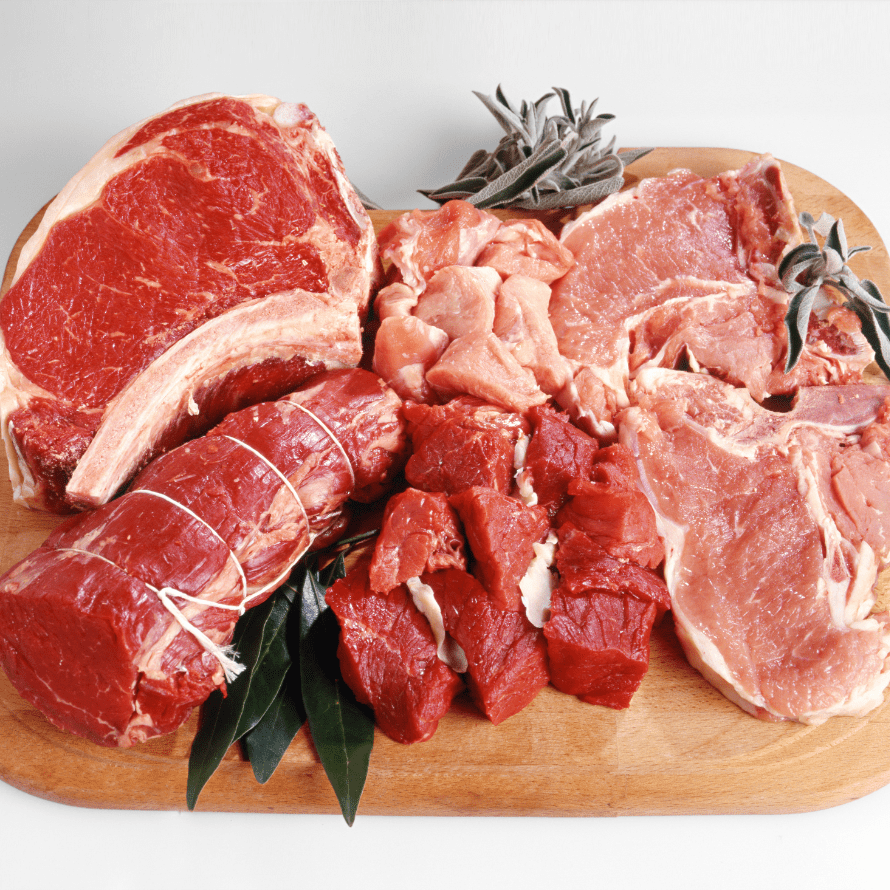
Heme sources of iron come from meat and seafood. Research shows that this form of iron is most easily absorbed in the body (at a rate of 15-35%) (9).
Click to download the image below with examples of heme sources and their iron content per 100 g (10). We find this list helpful to keep in mind when planning meals for your baby.
As you can see, liver, fish, and shellfish offer some of the highest amounts of iron. They’re great options to offer your baby, however, we do want to be clear on a couple of things.
Liver is very high in a number of nutrients, and because of this, there is the potential for your baby to get too much of some of them, specifically vitamin A. Therefore, we don’t recommend that you offer liver more than once per week despite how good of an iron source it is.
We also wanted to note that red meat, like beef, pork, and venison, typically contains higher amounts of iron compared to white meat, like chicken and turkey. Therefore, these are going to be the options that offer more nutritional “bang for your buck” so to speak.
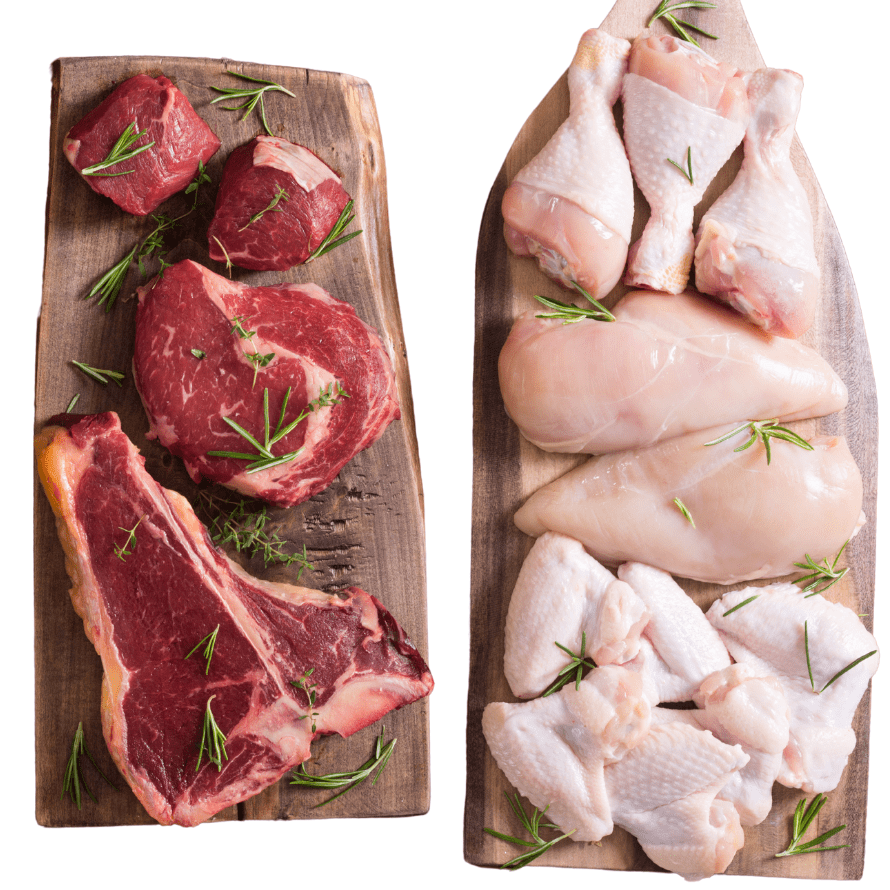
*Fish and shellfish are top allergens, so before offering any to your baby you need to ensure you’re following proper allergen introduction protocols. It also can be tricky to serve some forms of shellfish safely, so make sure to look up how to do that in our Baby Led Feeding online course. You can find this info in the “how to serve” section of the course.
Non-heme sources
Non-heme forms of iron are the primary source of iron found in plant-based foods, such as grains and beans.
Despite them having similar amounts of iron to some of the heme sources (or in some cases greater amounts of iron), the iron in non-heme sources is not as easily absorbed by the body compared to heme sources. In fact, the absorption rate is only about 10%.
This is due to the many interactions between molecules in plants and iron (eg. phytates, oxalates, polyphenols, and calcium). These interactions work to decrease the amount of iron that can be absorbed by the body.
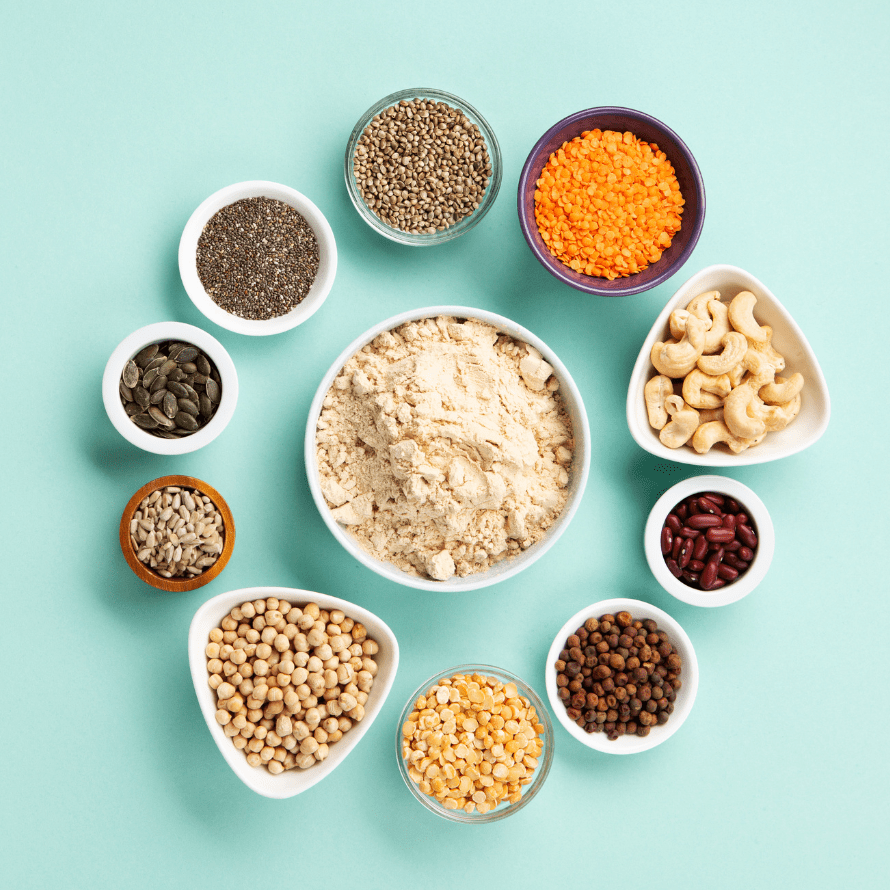
This is why for babies who are being served a vegan or vegetarian diet, we recommend that you offer iron rich foods at every single meal. Approximately 1.8 times more iron is needed to make up for the poorer absorption rate – so make every meal count (11)!
Click the image below to download the list of non-heme sources of iron and their iron content for inspiration on ways to add iron to various meals (10).
*Soybeans (from which tofu is also made) are a top allergen, and therefore should always be introduced to babies according to proper allergy introduction protocols. The same is true for cashews, almonds, and eggs.
Black olives and prune juice are higher in salt and sugar, so we would also want you to be conscious of how much is offered in a baby’s overall diet.
Does breastmilk or formula provide iron for baby?
Although the iron in breastmilk is absorbed at a rate of 45-100%, breastmilk contains very little iron overall and therefore shouldn’t be the sole source of iron for babies over 6 months (12).
On the other hand, infant formulas are typically fortified with much higher iron concentrations, somewhere between 4 and 12 mg/l. This is because the rate at which this iron is absorbed in the body is about 19% (13).

Now, this does not mean that breast milk is not what your baby needs or that after 6 months you should switch to formula. This is only to emphasize the importance of offering iron rich foods for babies through solids, regardless of the type of milk your baby is drinking (and especially if being exclusively breastfed) (14).
Tips for boosting iron or increasing absorption
Eating iron-rich foods is one thing…having it be absorbed by the body is another. As we’ve mentioned, absorption rates vary based on the type of iron being consumed and we don’t want all of those yummy iron-rich dishes to go to waste!
So let’s get into some tips to boost your baby’s iron absorption!
Pair non-heme sources of iron with vitamin C
Did you know that vitamin C enhances the absorption of iron in foods? So especially with those non-heme, or plant sources of iron, try and see how you can add a source of vitamin C to boost the absorption rate (15).

Examples of good sources of vitamin C include citrus fruits like oranges, lemon, strawberries and melons. You also get lots of vitamin C in broccoli, peppers, tomatoes, and leafy greens (15)!
The cool thing is that a lot of our food combinations already have iron + vitamin C built right in. Think of chili (beans + tomato sauce) or hummus (chickpeas + lemon juice).
Here are some other great combinations:
- Hard-boiled egg + orange wedge
- Fortified pasta with peppers & tomato sauce
- Pork with mango salsa
- Oatmeal with berries
Pair heme and non-heme sources together
Have you ever heard of the “meat factor” (16)?
It has been noted that combining meat with a non-heme source of iron actually increases the rate of iron absorption in that meal (17). So if your baby is eating a non-heme iron-rich meal and you want to boost the iron that will be absorbed, add some meat to it!
An easy example of this is if you’re making a chili that has black beans, red kidney beans, etc. in it – add some ground beef! Not only are you pairing heme and non-heme with this meal, but you’re also combining it with a vitamin C source because of the tomatoes typically used in chili.
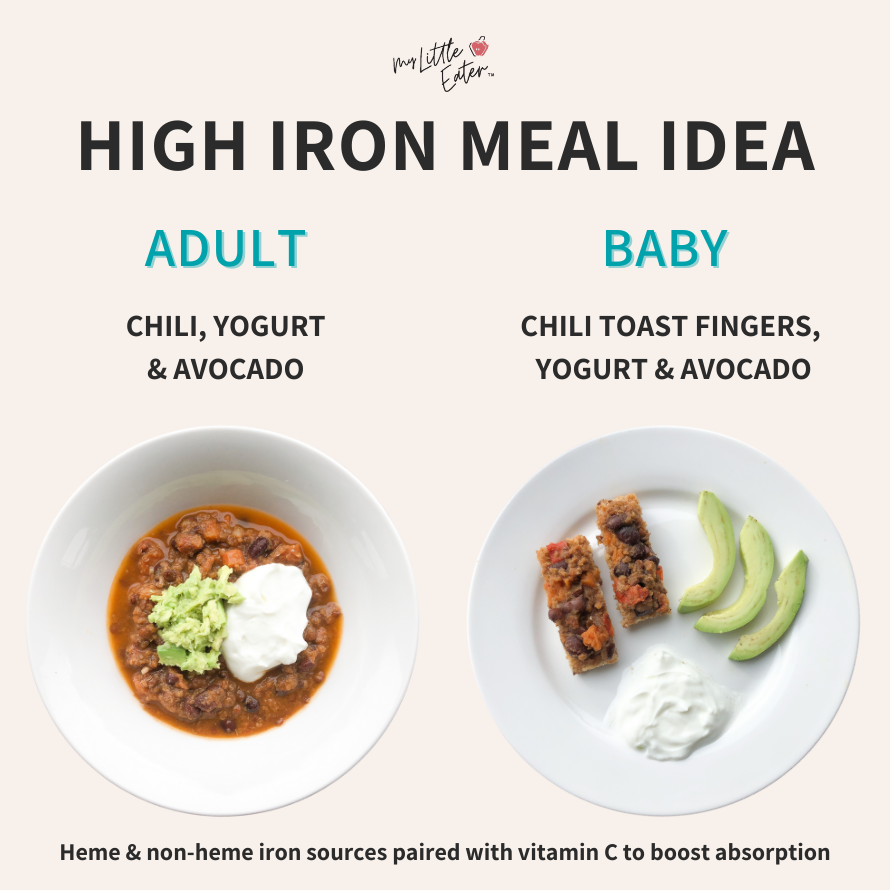
Avoid excessive dairy or serving dairy with iron rich foods
Calcium has been shown to decrease the absorption of iron when consumed in the same meal as iron-containing foods (18).
Research shows that the effects are short-term and that larger quantities of calcium-containing foods have a greater impact. So, I don’t want you to worry too much about the little bit of milk in your baby’s spinach and berry smoothie, or about the little bit of cheese sprinkled on their chili.
However, keep in mind that a meal or snack mostly made up of calcium-containing foods (like cottage cheese or yogurt) might be better off saved for a couple of hours before or a couple of hours after your intentional “high iron” containing meal.
And of course, don’t give your baby dairy milk, or a milk alternative, as a beverage before age one. Stick with breastmilk or iron-fortified formula as their main milk source. Similarly, after age one, it would be better to offer a cup of milk during meals or snacks without high-iron foods and offer water when serving high-iron foods.
Cook baby’s food in cast iron pans
Using a cast iron pan in your cooking can be a great way to get some extra iron into your baby’s food. By cooking in a cast iron skillet (especially when heating acidic sauces and other liquid meals), the iron from the skillet can actually transfer to your food – giving them an extra boost!
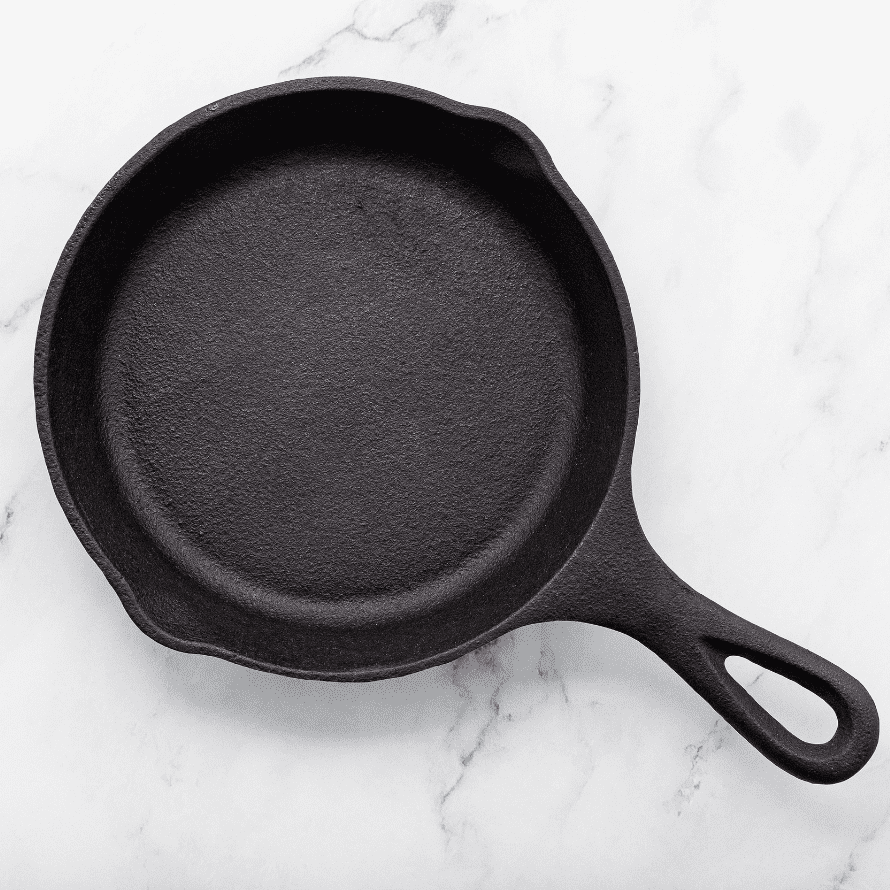
Have enough pots and pans in your house? Give the Lucky Iron Fish some thought!
This cool tiny fish is a cooking tool that operates along the same lines as using a cast iron skillet. You throw this little guy into a pot of slightly acidic water or broth and boil it for 10 minutes for the iron to leach out into your broth. It is yet another way that you can boost iron amounts while cooking.
Symptoms of iron deficiency
Iron deficiency is a serious condition that happens when your baby hasn’t been getting enough iron. It is the number one nutrient deficiency in babies worldwide, which is why we’re so adamant that high-iron foods be introduced early and served daily to your baby. (19)
You need to recognize the symptoms of iron deficiency so that you can act quickly to have your baby’s iron levels checked and speak with their doctor about the next steps. Depending on where you live, your baby may automatically have their iron levels checked at their 1-year check-up, however, that does not happen everywhere. It’s important that if you have concerns about their levels you ask to have them checked.
Let’s go through each of the symptoms in detail.
Fatigue and Irritability

Babies with iron deficiency may appear unusually tired or lethargic, even after normal periods of rest. They may also become more fussy or irritable, which can be a sign of low energy levels.
Pale Complexion
Iron deficiency can lead to a paler than usual complexion in babies, particularly noticeable in areas such as the face, lips, and inside the lower eyelids. This paleness may indicate decreased hemoglobin levels in the blood.
Poor Appetite
A lack of interest in feeding or a decreased appetite can be a symptom of iron deficiency in babies. They may show reluctance to breastfeed or bottle-feed and could begin refusing solid food meals leading to inadequate intake of iron-rich foods.
Delayed Developmental Milestones
Iron is essential for cognitive development and motor skills. Babies with iron deficiency may experience delays in reaching developmental milestones, such as rolling over, sitting up, or crawling.

Increased Infections
Iron deficiency can weaken the immune system, making babies more susceptible to infections. They may experience frequent colds, respiratory infections, or other illnesses.
Restless Legs Syndrome
In some cases, babies with iron deficiency may exhibit restless legs syndrome. This is characterized by involuntary leg movements or discomfort, especially during sleep (20).
Poor growth
Iron deficiency can impede a child’s growth by affecting the production of red blood cells and slowing down the growth process. Height stagnations, or a lack of expected growth in height over time, may be observed in children with iron deficiency (21).
Sleep disturbances

Iron deficiency can also affect a child’s sleep patterns, leading to difficulties in falling asleep, staying asleep, or experiencing restless sleep. This can result in increased irritability, daytime fatigue, and decreased overall well-being (22).
When an iron supplement is necessary
Iron supplements may not be necessary if your baby is eating iron rich foods. However, in special cases, like preemies and babies who aren’t eating enough, iron supplements may become necessary to prevent iron deficiency.
Iron supplements we recommend
Here is a list of iron supplements that we recommend, but be sure to talk to your doctor before offering any supplements to your baby. You’ll want to have them confirm that it’s necessary and go over proper dosing with you.
Important Note: something that you will find on the bottle of most, if not all, iron supplements is a warning about accidental overdose in children under 6 years old. Please keep all supplements out of reach of your children, even if they’re your child’s supplements, and have the number for poison control easily accessible.
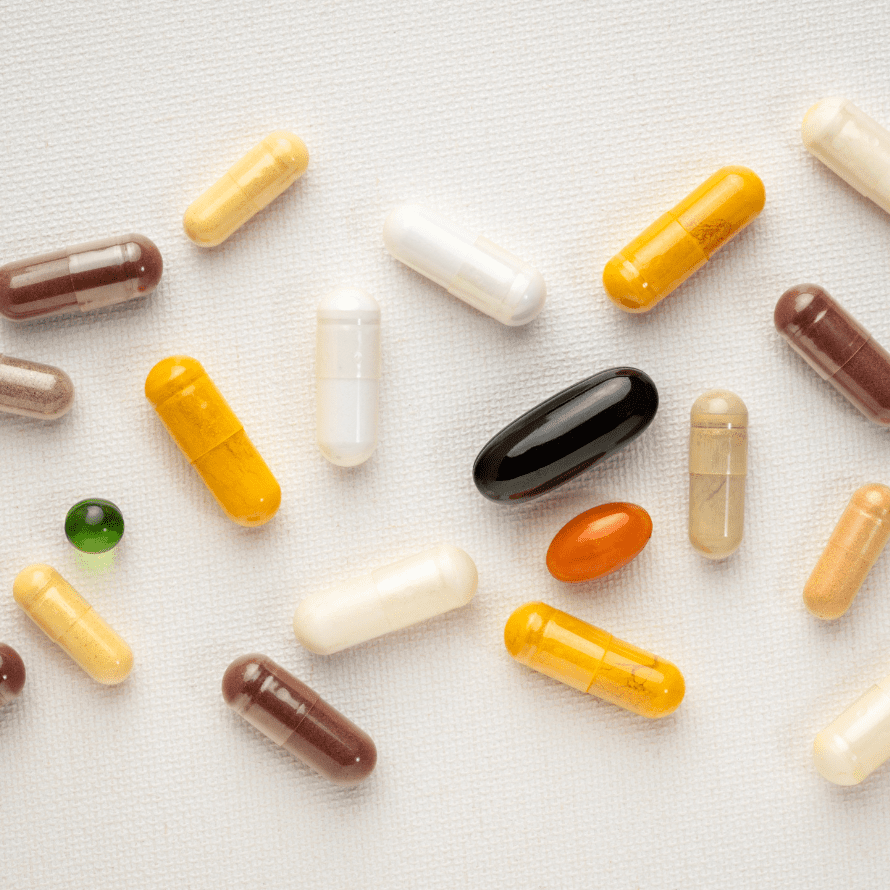
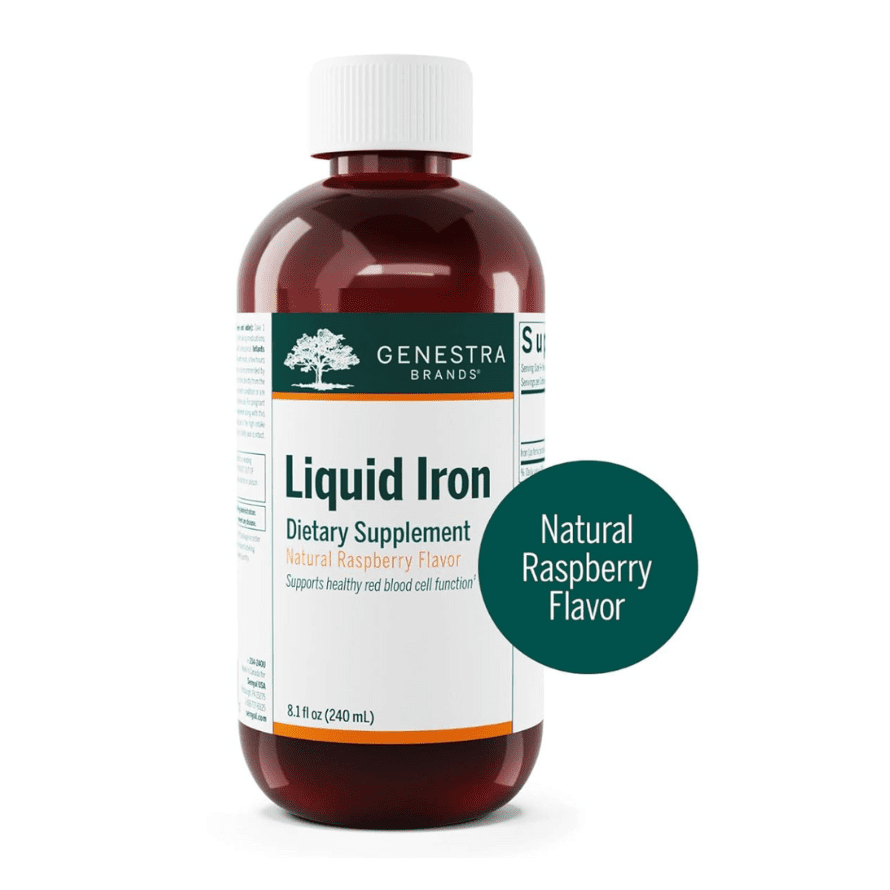
Genestra brand liquid iron is a great supplement specially designed to replenish your baby’s iron stores.
The dose is dependant on age, always thoroughly read the packaging and speak with your doctor before offering.
Since these are a chewable option, they would be more appropriate for babies 18 months to 2 years old.
As always, speak with your doctor prior to offering any supplements to ensure they’re a safe and appropriate option for your baby’s needs.
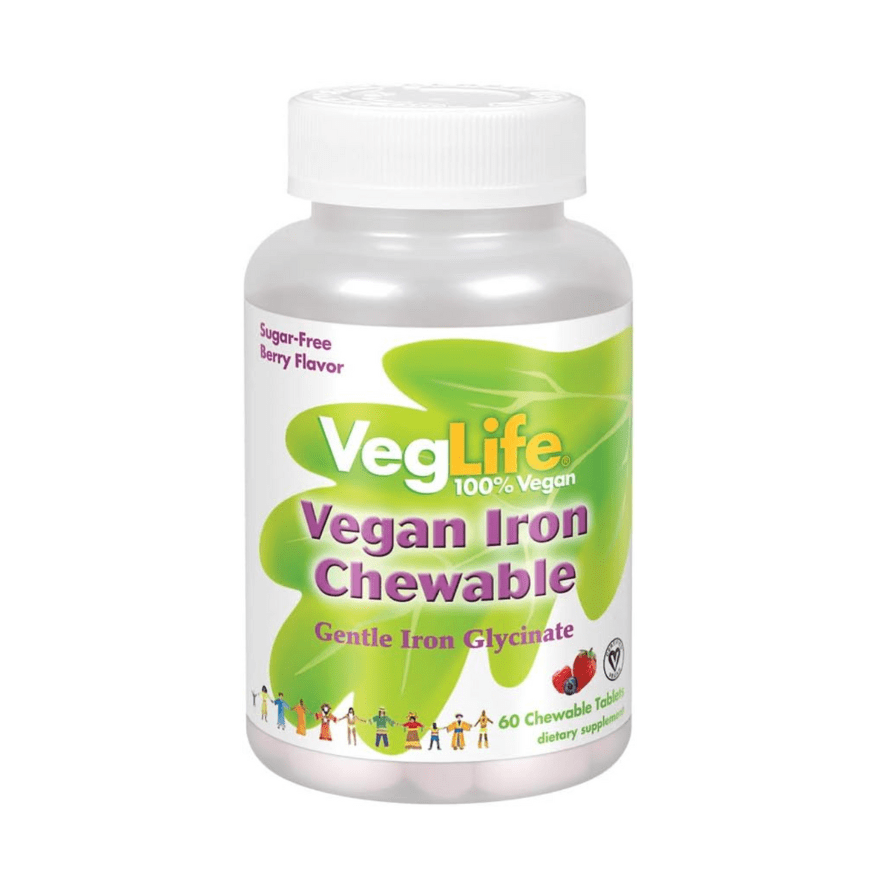
Baby friendly high iron recipe
Since we want you to start offering high-iron foods from day one of starting solids, we’re going to give you a recipe that can be served both as a mash preloaded on a spoon and a finger food.
No matter how you choose to begin, you’ll have a dietitian-approved, high-iron recipe you can try!
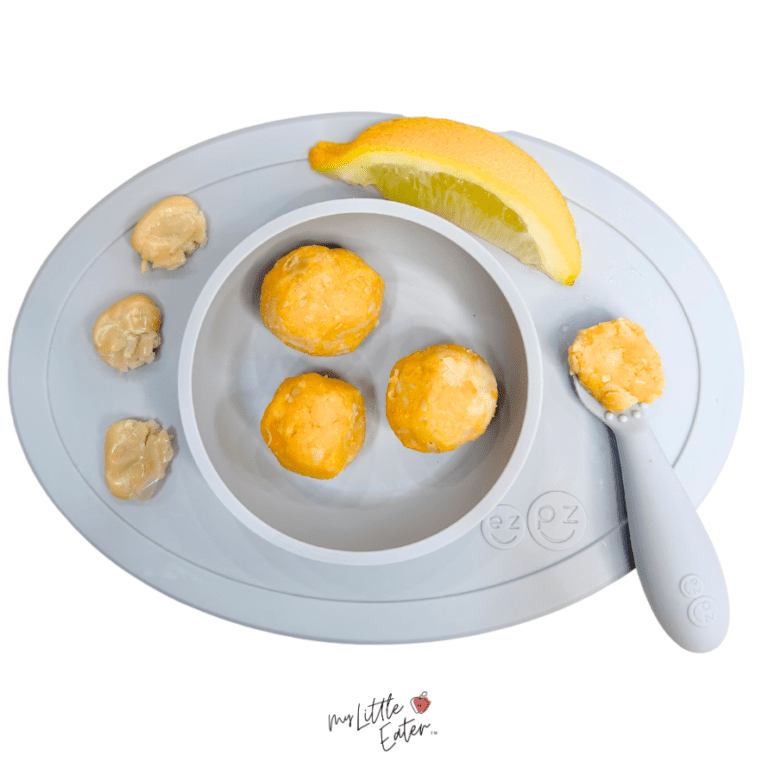
White beans with lemon and sweet potato
Ingredients
- 1 can white kidney beans (500 mL)
- ½ juice of a lemon (or 1 tbsp. lemon juice)
- 1 sweet potato
Instructions
- Rinse the canned white beans under water (twice if it’s not a low-sodium version). Drain the water.
- Using a fork, mash the beans until a lumpy puree forms. A lumpy texture and skin are ok, as long as the whole bean shape doesn’t remain.
- Juice 1/2 a lemon and mix the juice into the white bean puree.
- Cut the remaining lemon in half (yielding 2 x quarter wedges).
- Cook the sweet potato and mash it. Stir the mashed sweet potato into the lemon white bean mixture, until well combined (go for a 1:1 ratio of beans to sweet potato). Roll mixture into 2 tbsp - sized balls.
Notes
If you like this recipe – we’ve got more! Our team of pediatric dietitians have carefully crafted creative and nutritious iron-packed recipes inside our 60-day baby led feeding meal plan.
The plan also gradually progresses in textures, while giving both puree and finger food serving options. So whether you’re starting with purees, finger foods, or a combo of both you’ll know how to serve the recipes we’ve included.
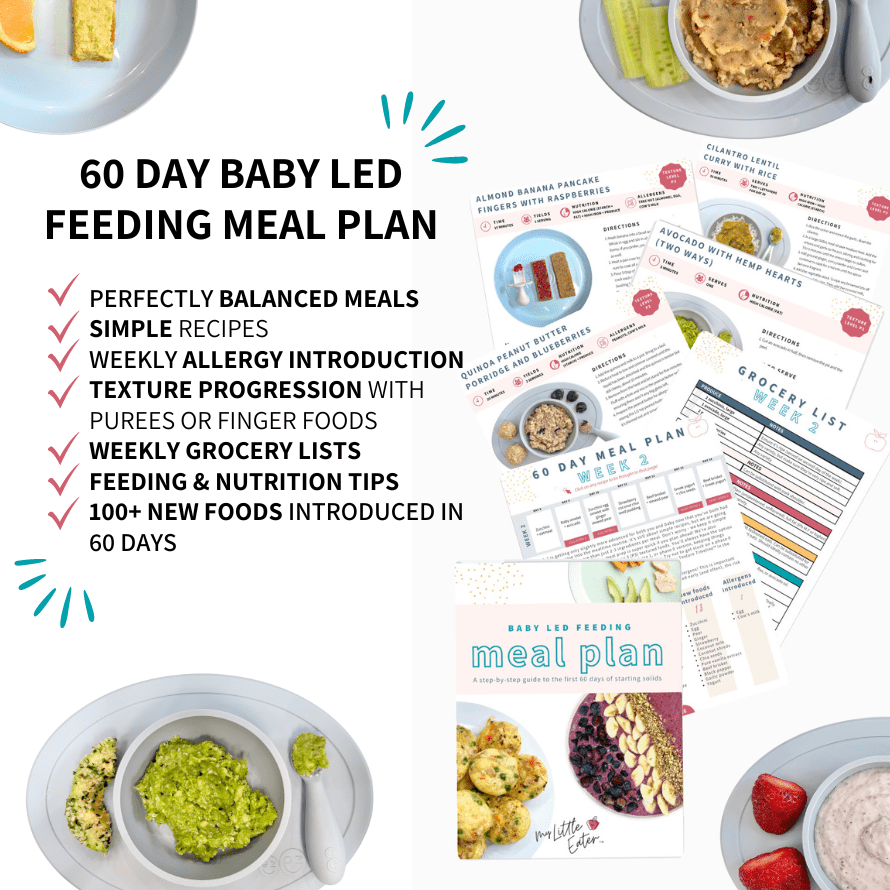
Was this helpful? Pin it to save for later!
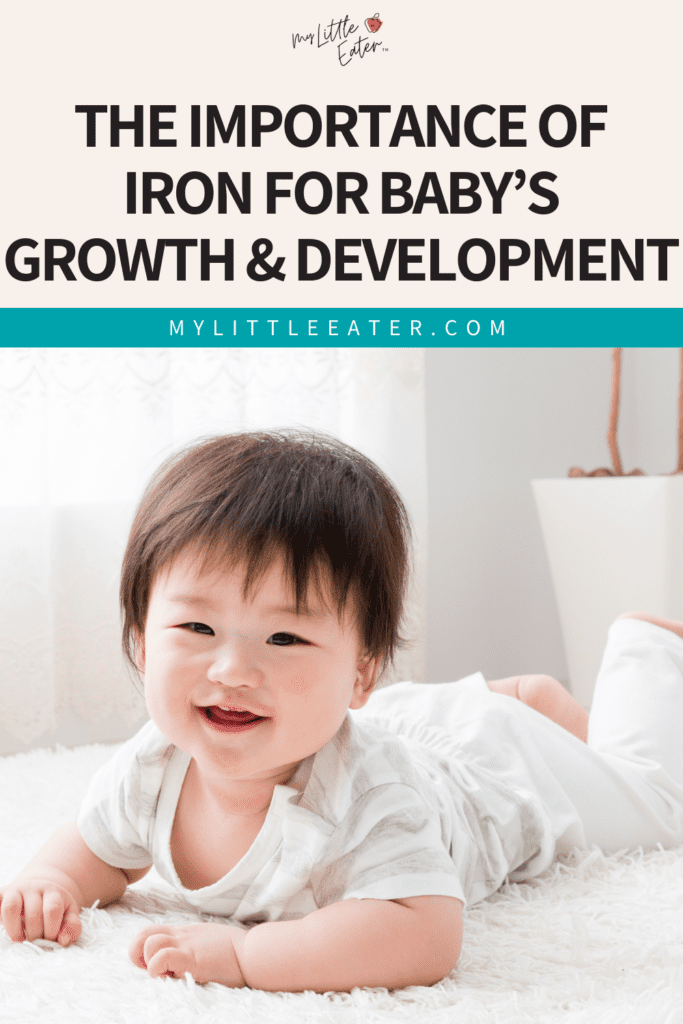
References
- McCann S, Perapoch Amadó M, Moore SE. The Role of Iron in Brain Development: A Systematic Review. Nutrients. 2020 Jul 5;12(7):2001. doi: 10.3390/nu12072001. PMID: 32635675; PMCID: PMC7400887.
- Muckenthaler MU, Rivella S, Hentze MW, Galy B. A Red Carpet for Iron Metabolism. Cell. 2017 Jan 26;168(3):344-361. doi: 10.1016/j.cell.2016.12.034. PMID: 28129536; PMCID: PMC5706455.
- Ni S, Yuan Y, Kuang Y, Li X. Iron Metabolism and Immune Regulation. Front Immunol. 2022 Mar 23;13:816282. doi: 10.3389/fimmu.2022.816282. PMID: 35401569; PMCID: PMC8983924.
- https://www.nhlbi.nih.gov/health/anemia/iron-deficiency-anemia
- Soliman AT, De Sanctis V, Kalra S. Anemia and growth. Indian J Endocrinol Metab. 2014 Nov;18(Suppl 1):S1-5. doi: 10.4103/2230-8210.145038. PMID: 25538873; PMCID: PMC4266864.
- Domellöf, Magnus & Braegger, Christian & Campoy, Cristina & Colomb, Virginie & Decsi, Tamás & Fewtrell, Mary & Hojsak, Iva & Mihatsch, Walter & Mølgaard, Christian & Shamir, Raanan & Turck, Dominique & Goudoever, Johannes. (2014). Iron Requirements of Infants and Toddlers. J Pediatr Gastroenterol Nutr. 58. 10.5167/uzh-106040.
- Oliveira Fde C, Assis KF, Martins MC, Prado MR, Ribeiro AQ, Sant’Ana LF, Priore SE, Franceschini Sdo C. Tempo de clampeamento e fatores associados à reserva de ferro de neonatos a termo [Timing of clamping and factors associated with iron stores in full-term newborns]. Rev Saude Publica. 2014 Feb;48(1):10-8. doi: 10.1590/s0034-8910.2014048004928. PMID: 24789632; PMCID: PMC4206121.
- https://www.ncbi.nlm.nih.gov/pmc/articles/PMC2528681/
- Hurrell R, Egli I. Iron bioavailability and dietary reference values. Am J Clin Nutr. 2010 May;91(5):1461S-1467S. doi: 10.3945/ajcn.2010.28674F. Epub 2010 Mar 3. PMID: 20200263.
- https://fdc.nal.usda.gov/index.html
- https://ods.od.nih.gov/factsheets/Iron-HealthProfessional/
- Qasem WA, Friel JK. An Overview of Iron in Term Breast-Fed Infants. Clin Med Insights Pediatr. 2015 Sep 23;9:79-84. doi: 10.4137/CMPed.S26572. PMID: 26448697; PMCID: PMC4583094.
- Hertrampf, Eva; Olivares, Manuel; Pizarro, Fernando; Walter, Tomas. High Absorption of Fortification Iron From Current Infant Formulas. Journal of Pediatric Gastroenterology & Nutrition 27(4):p 425-430, October 1998.
- Domellöf M, Braegger C, Campoy C, Colomb V, Decsi T, Fewtrell M, Hojsak I, Mihatsch W, Molgaard C, Shamir R, Turck D, van Goudoever J; ESPGHAN Committee on Nutrition. Iron requirements of infants and toddlers. J Pediatr Gastroenterol Nutr. 2014 Jan;58(1):119-29. doi: 10.1097/MPG.0000000000000206. PMID: 24135983.
- https://www.cdc.gov/nutrition/infantandtoddlernutrition/vitamins-minerals/iron.html
- Consalez F, Ahern M, Andersen P, Kjellevold M. The Effect of the Meat Factor in Animal-Source Foods on Micronutrient Absorption: A Scoping Review. Adv Nutr. 2022 Dec 22;13(6):2305-2315. doi: 10.1093/advances/nmac089. PMID: 36055778; PMCID: PMC9776636.
- https://www.redcrossblood.org/donate-blood/blood-donation-process/before-during-after/iron-blood-donation/iron-rich-foods.html
- Ems T, St Lucia K, Huecker MR. Biochemistry, Iron Absorption. [Updated 2023 Apr 17]. In: StatPearls [Internet]. Treasure Island (FL): StatPearls Publishing; 2024 Jan-. Available from: https://www.ncbi.nlm.nih.gov/books/NBK448204/
- https://www.uptodate.com/contents/iron-deficiency-in-infants-and-children-less-than12-years-screening-prevention-clinical-manifestations-and-diagnosis
- Tilma J, Tilma K, Norregaard O, Ostergaard JR. Early childhood-onset restless legs syndrome: symptoms and effect of oral iron treatment. Acta Paediatr. 2013 May;102(5):e221-6. doi: 10.1111/apa.12173. Epub 2013 Mar 6. PMID: 23360128.
- Ashraf T. Soliman, Muhamad M. Al Dabbagh, Alia Hussein Habboub, Ashraf Adel, Noura Al Humaidy, Ahmad Abushahin, Linear Growth in Children with Iron Deficiency Anemia Before and After Treatment, Journal of Tropical Pediatrics, Volume 55, Issue 5, October 2009, Pages 324–327.
- Murat S, Ali U, Serdal K, Süleyman D, İlknur P, Mehmet S, Bahattin A, Tunahan U. Assessment of subjective sleep quality in iron deficiency anaemia. Afr Health Sci. 2015 Jun;15(2):621-7. doi: 10.4314/ahs.v15i2.40. PMID: 26124812; PMCID: PMC4480468.

Edwena Kennedy, RD
Founder and lead Registered Pediatric Dietitian at My Little Eater Inc., creator of The Texture Timeline™, and mom of two picky-turned-adventurous eaters.

Edwena Kennedy, RD
Founder and lead Registered Pediatric Dietitian at My Little Eater Inc., creator of The Texture Timeline™, and mom of two picky-turned-adventurous eaters.
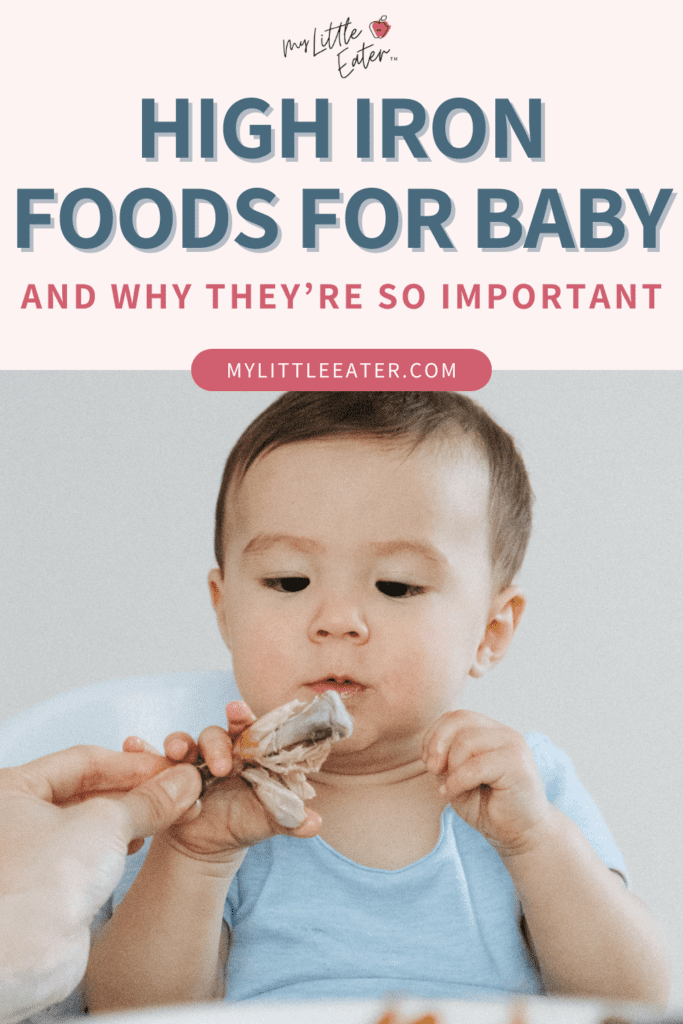
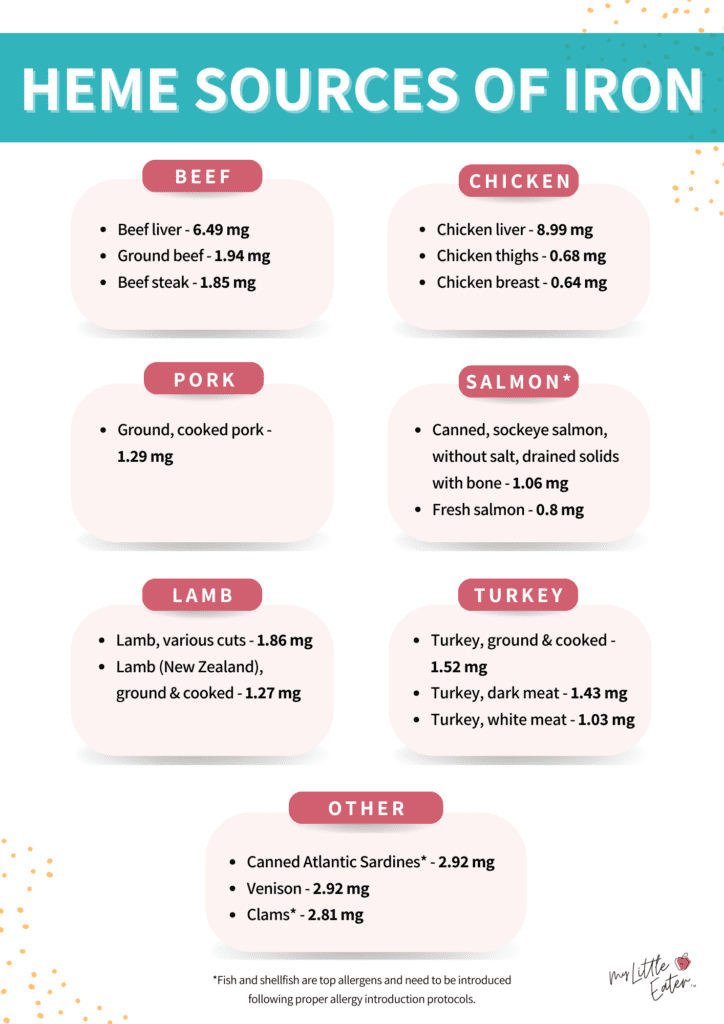
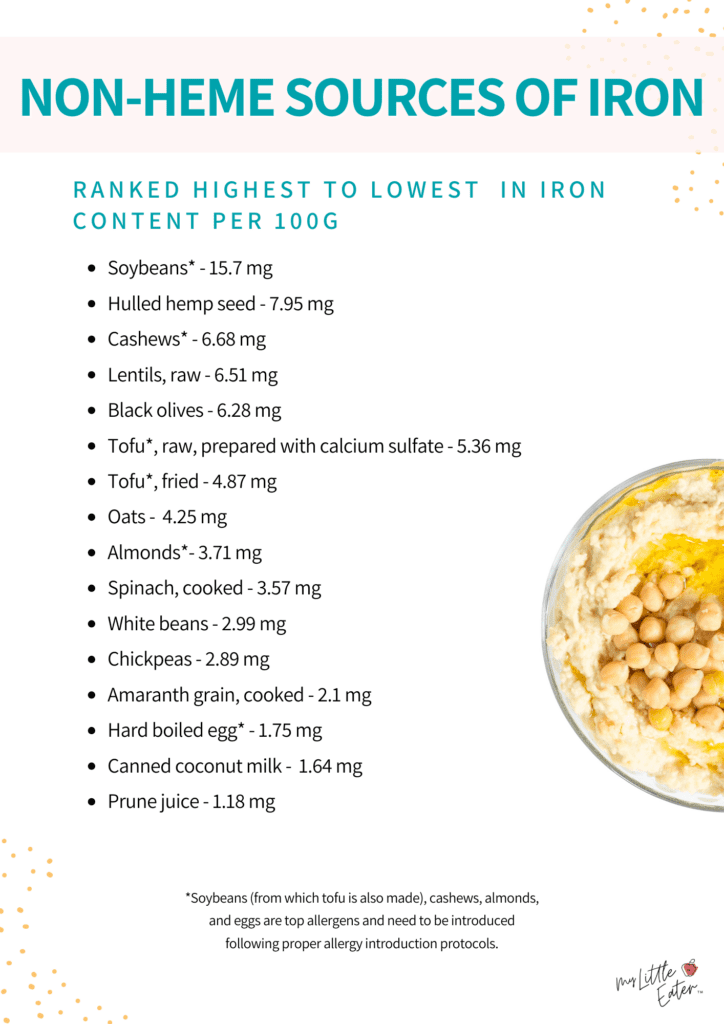
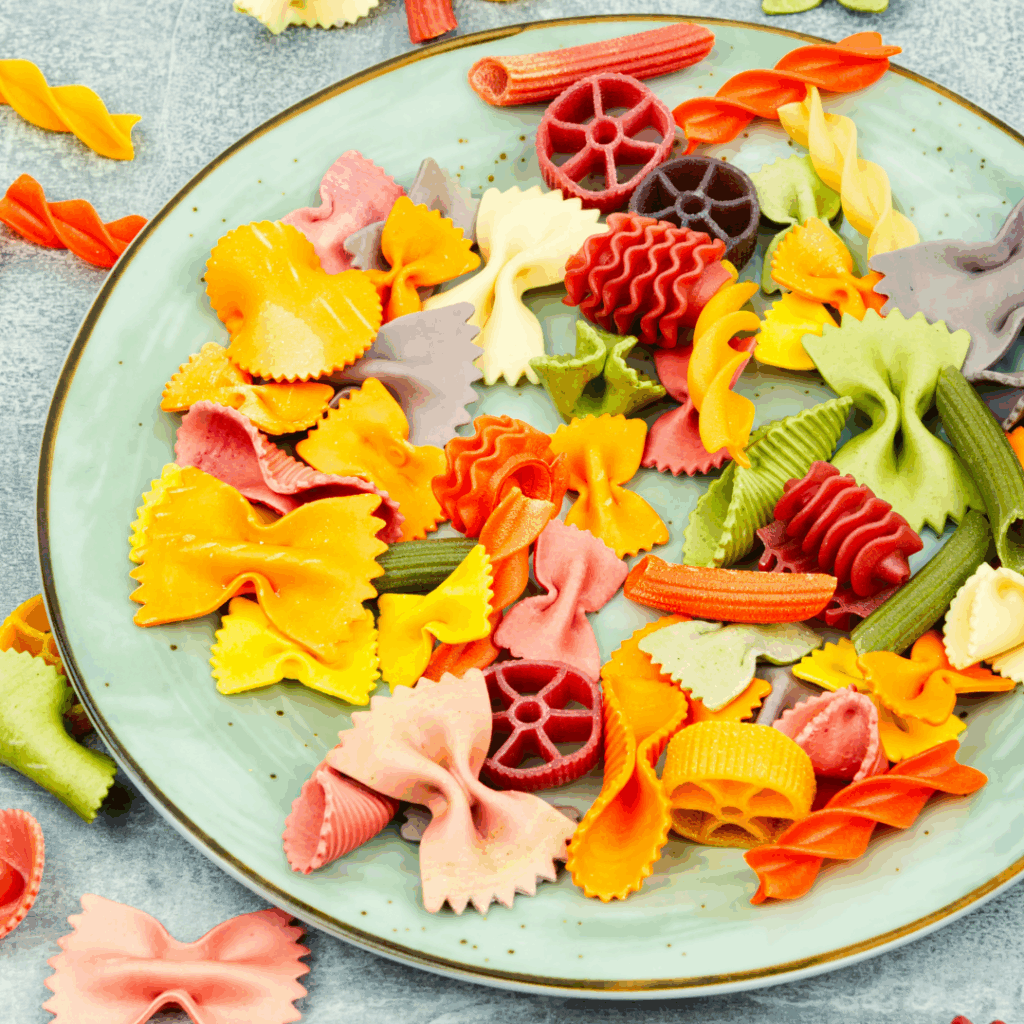
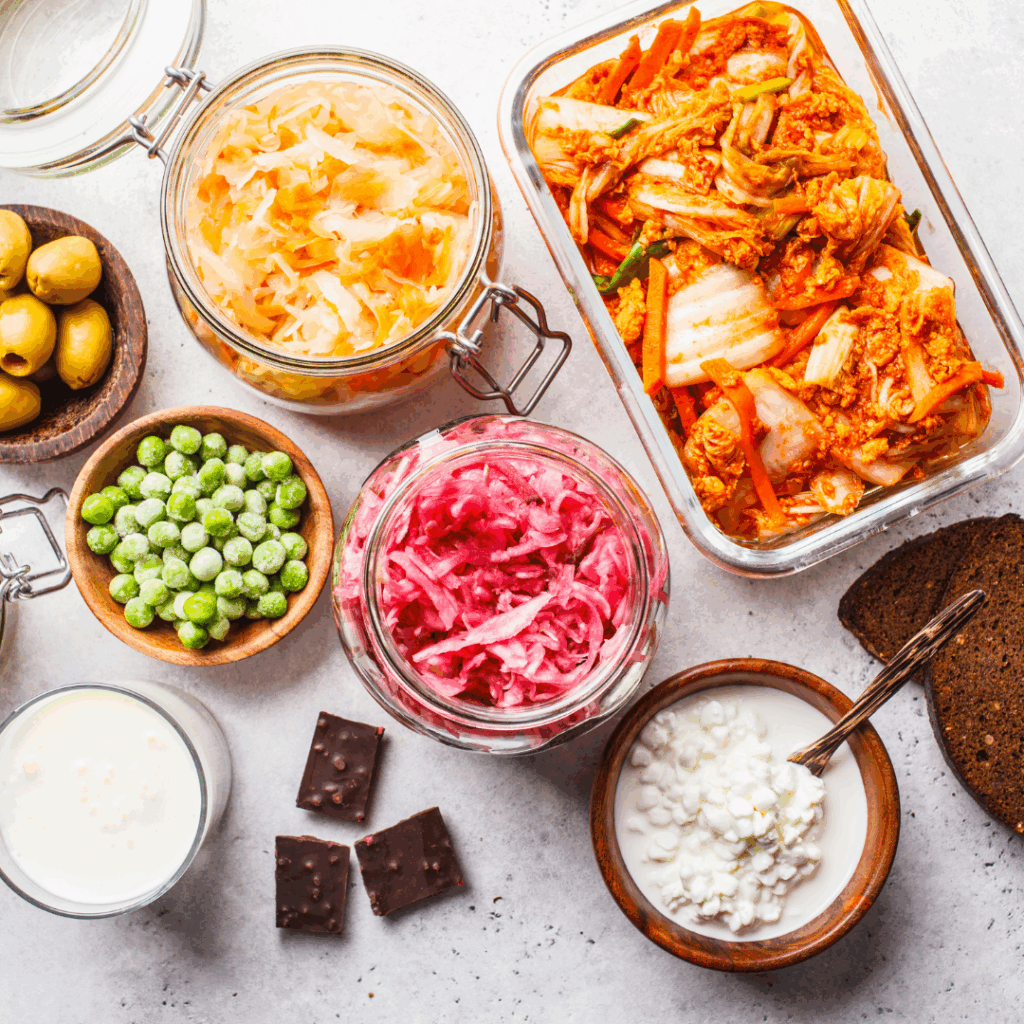
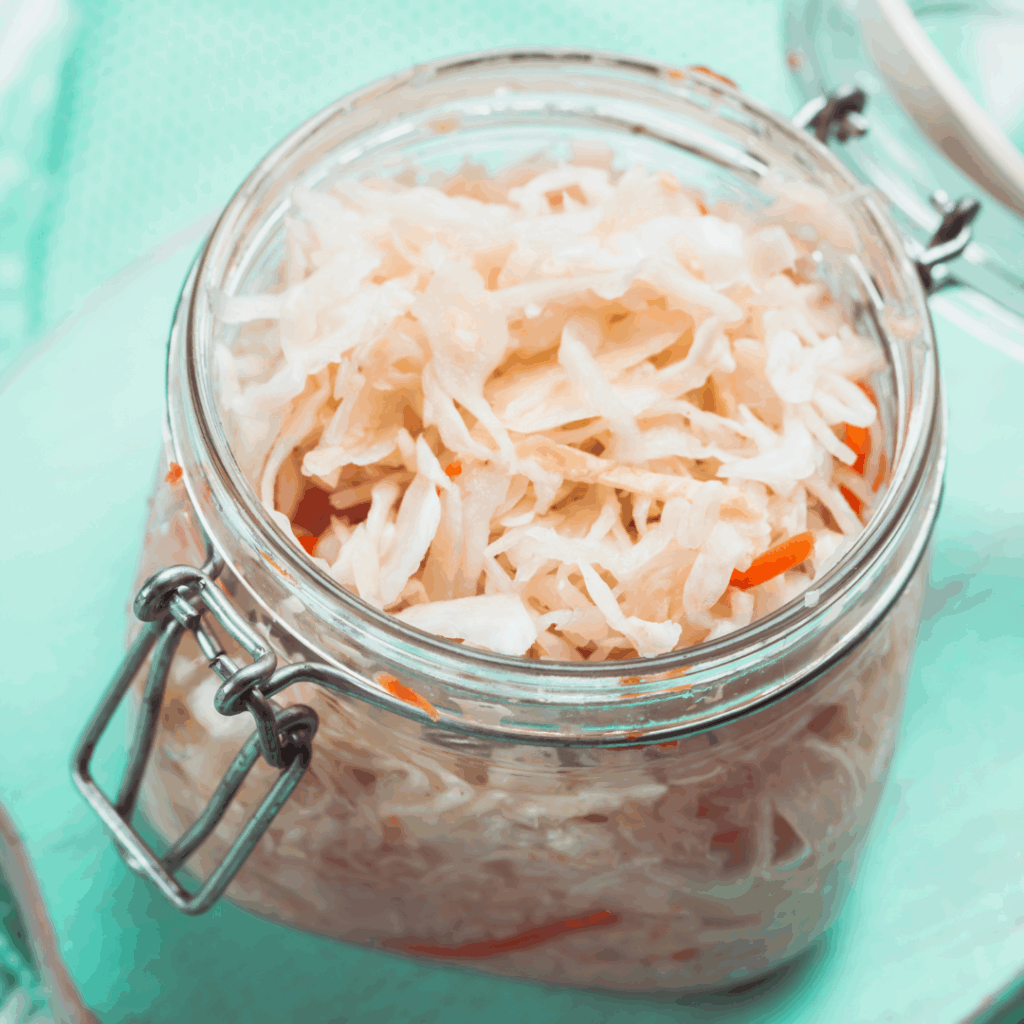






4 Comments
By including iron-rich foods in your baby’s diet, you’ll ensure that they get the essential nutrients needed for healthy growth and development.
Exactly! Iron-rich foods are so important for your baby’s growth and development 🙂
Iron foods for babies prevent anemia and support cognitive development, making this information valuable for parents.
We completely agree, thank you for your comment!